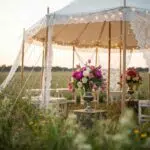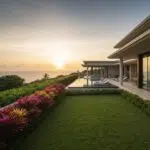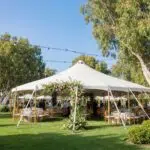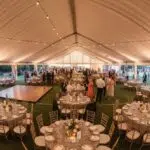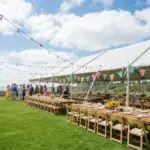Southern California’s diverse climates call for smart tent choices to make every event a success, from the coast to the desert. Event organizers often navigate unpredictable spring showers, intense summer sun, breezy fall days, and cool winter air. This guide breaks down the top tent options for each season, covering what to look for, the best tent styles, and essential extras to keep your guests comfortable and your event running smoothly. We’ll explore versatile frame and sailcloth tents for spring, breezy high-peak shelters for summer, sturdy structures for fall winds, and cozy, insulated clearspan options for winter—all with practical advice and local know-how.
Key Considerations for Southern California Seasonal Event Tents
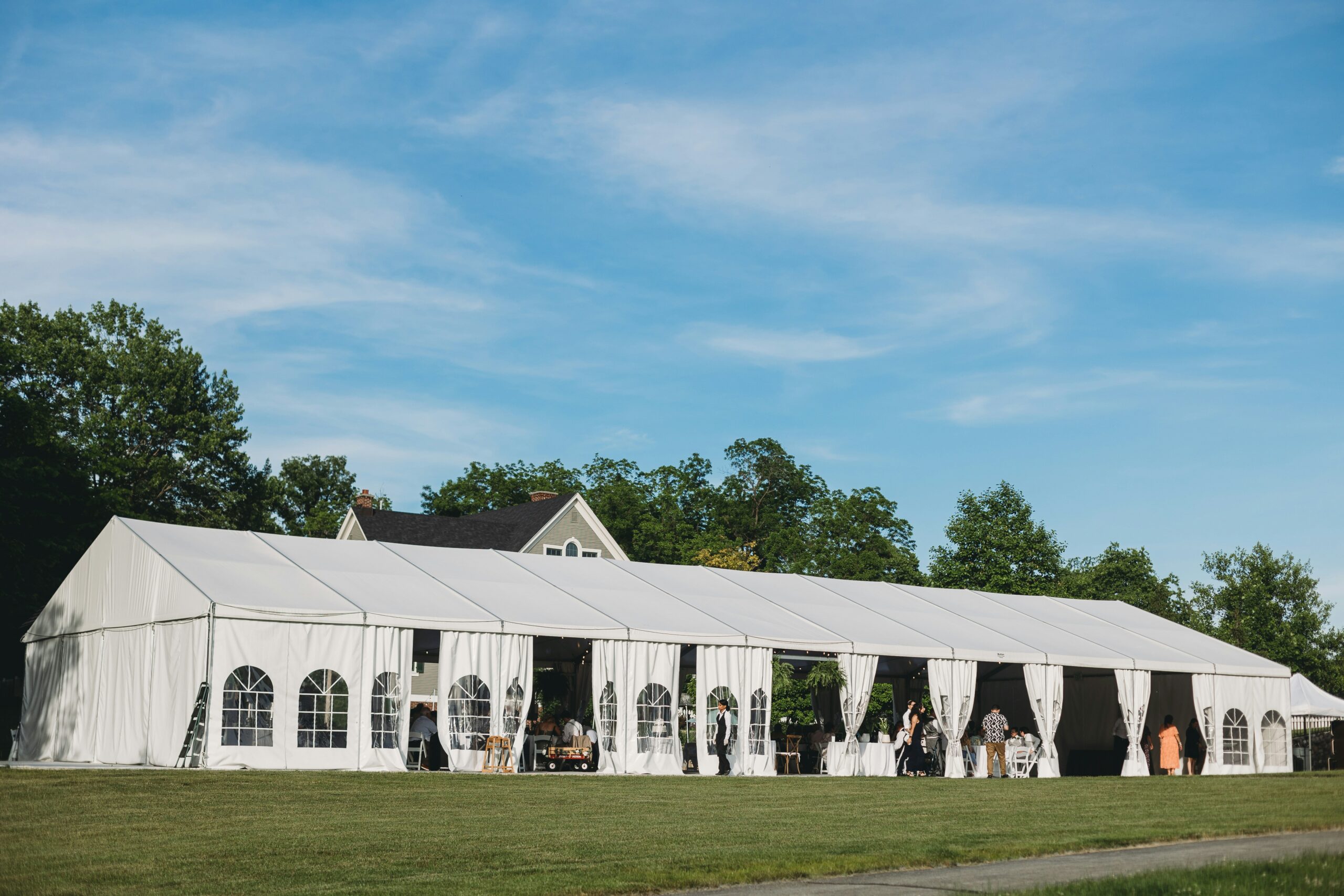
Choosing the right tent means understanding the local weather—temperature shifts, sun intensity, and wind patterns across our coastal, inland, desert, and mountain regions. These elements influence the tent’s frame, fabric, and necessary accessories, ensuring your rental not only looks great but also provides reliable protection for your guests and event essentials.
Here are the main factors to keep in mind:
- Rainfall likelihood and drainage needs for spring events in canyons and near beaches.
- High temperatures and UV exposure for summer celebrations by the sea or in inland valleys.
- Wind speeds and gusts common in autumn, especially in open valleys and mountain passes.
- Low overnight temperatures and potential frost in higher elevations during winter.
By aligning these factors with specific tent features, you can minimize weather risks while enhancing your event’s atmosphere and functionality. This naturally leads us to how specific weather conditions guide tent selection by season.
How Weather Conditions Influence Tent Choices Season by Season
| Season | Main Weather Challenge | Tent Solution |
|---|---|---|
| Spring | Rain and light winds | Waterproof fabrics with sealed seams |
| Summer | Intense heat and UV rays | UV-resistant coatings and ample ventilation |
| Fall | Gusty winds | Reinforced anchoring and sturdy frames |
| Winter | Chilly temperatures and frost | Insulated walls and heating-compatible structures |
Each of these solutions highlights the importance of understanding our local microclimates and how they impact tent selection.
Why Local Climate Matters for Southern California Tent Rentals
Southern California boasts a wide range of environments, from sandy beaches and lush inland valleys to vast deserts and cool mountain retreats. Coastal breezes can be refreshing in summer but can also lead to salt corrosion, while valleys can become quite hot. Desert locations demand wind-rated structures and shade, and mountain sites need robust frames for colder conditions. Understanding these regional differences ensures you get the right foundation and fabric for both style and durability, guiding you toward the perfect seasonal tent solution.
The Advantages of Renting Seasonal Event Tents
Renting seasonal tents offers a smart combination of affordability, design flexibility, and expert support to handle unpredictable weather and changing event styles.
- Avoids significant upfront costs and storage hassles.
- Provides access to the latest fabric and structural innovations.
- Ensures professional installation and on-site adjustments by skilled technicians.
Partnering with a rental company gives you access to specialized equipment and ongoing advice, setting the stage for exploring the best tent options for spring events.
Top Tent Choices for Spring Events
For spring events, you need shelters that can handle occasional rain, mild breezes, and complement the beauty of blooming landscapes. Versatile, weather-resistant tents will keep your guests comfortable while blending beautifully with garden settings, vineyards, and coastal lawns.
Why Frame Tents Shine for Spring Weddings and Festivals
Frame tents offer excellent protection from rain and flexible layout options, making them perfect for spring celebrations across Southern California.
- Strong aluminum frames can withstand wind and support waterproof roofing.
- Optional sidewalls can be quickly added for shelter or removed for open-air enjoyment on sunny days.
- Customizable sizes can accommodate everything from intimate weddings to bustling markets and concert stages.
These qualities make them a solid choice, leading us to explore sailcloth tents next.
How Sailcloth Tents Elevate Spring Event Ambiance and Airflow
Sailcloth tents bring a touch of elegance and airy comfort to spring receptions, utilizing natural light and breathable fabrics.
- Their translucent peaks beautifully diffuse daylight, reducing the need for artificial lighting.
- The breathable fabric allows for excellent airflow on mild spring mornings.
- Classic, flowing shapes are ideal for upscale weddings and garden parties.
Once you’ve chosen your tent, consider accessories that enhance its spring performance.
Essential Accessories for Optimizing Spring Tent Performance
Enhance your spring tent’s functionality with protective and decorative additions designed for mild, potentially damp conditions.
| Accessory | Purpose | Benefit |
|---|---|---|
| Waterproof Flooring | Keeps ground moisture out | Ensures a dry and comfortable interior for guests |
| Clear PVC Sidewalls | Blocks wind and rain while maintaining visibility | Preserves natural light and open views |
| String Lighting | Adds a cozy atmosphere on overcast days | Enhances the mood and extends enjoyment into the evening |
These accessories help keep your spring tent dry and inviting, setting the stage for tackling summer heat.
Choosing the Best Tents for Summer Events and Heat Management

Summer temperatures can soar, especially inland, and coastal areas still experience intense UV rays. Tents that offer ample shade, promote airflow, and provide sun protection are key to creating a cool, comfortable oasis without compromising on style.
Why Sailcloth and High-Peak Tents Are Great for Summer Airflow
Sailcloth and high-peak tents feature high ceilings and often open-sided designs that encourage natural air circulation, helping to keep the interior cool.
- Their elevated peaks allow hot air to rise and escape above guest areas.
- Open gables permit cross-breezes from multiple directions.
- Lighter-colored fabrics reflect sunlight, helping to lower the internal temperature.
These design features are fundamental when recommending cooling accessories.
Cooling Accessories to Keep Guests Comfortable in Summer Tents
Effective summer cooling relies on a combination of active airflow and smart shading within your tented space.
- Industrial fans can circulate air effectively throughout the tent.
- Mesh sidewalls can filter dust while maximizing cross-ventilation.
- Portable air conditioning units can create a consistently cool zone for ultimate comfort.
With airflow addressed, the next crucial factor is the fabric’s UV protection rating.
How UV Protection Impacts Summer Tent Selection
UV-resistant fabrics not only extend the life of your tent but also protect your guests from harmful rays. Materials with a UPF 50+ rating block over 98% of ultraviolet radiation, reducing discomfort and heat stress while keeping the fabric looking vibrant and intact.
Best Tent Options for Fall Events and Wind Resistance
Autumn events often contend with gusty winds and cooler evenings. Sturdy structures, combined with heating and enclosure options, are key to maintaining comfort as temperatures drop and breezes pick up.
Why Frame Tents Are Recommended for Windy, Cooler Fall Conditions
Frame tents offer excellent wind resistance and are compatible with heating systems, ensuring comfort during autumn breezes.
- Their cross-brace frame designs can withstand gusts up to 40 mph.
- Anchoring kits provide secure installation, even on uneven ground.
- Integrated roof supports are designed to safely accommodate hanging heaters.
These strengths naturally lead to combining heating and sidewall solutions.
Enhancing Fall Event Comfort with Heating and Sidewalls
Pairing portable heaters with insulated sidewalls can transform fall tents into warm, inviting lounges.
- Propane or electric patio heaters provide focused warmth where needed.
- Roll-up insulated sidewalls effectively block drafts and retain heat.
- Thermal liners installed under the roof can significantly boost warmth retention.
Beyond heating, planners often focus on reliable flooring and lighting.
Flooring and Lighting Solutions for Fall Outdoor Events
Choosing the right flooring and lighting for fall events balances durability with creating a cozy ambiance during shorter daylight hours.
| Flooring Option | Feature | Benefit |
|---|---|---|
| Raised Wood Platforms | Elevated, moisture-resistant surface | Keeps guests dry and comfortable on damp ground |
| Interlocking Dance Floors | Textured, slip-resistant panels | Offers a secure and stable surface for dancing |
| Ambient LED Uplighting | Warm-toned fixtures with adjustable brightness | Creates an inviting and warm evening atmosphere |
These finishing touches complete a robust fall setup and prepare us for winter requirements.
Essential Tent Features for Winter Events and Cold Weather
Winter gatherings require excellent insulation, dependable heating, and structures built to handle potential frost or light snow. Tents with open interiors, durable materials, and effective insulation systems make memorable cold-weather events possible.
Why Clearspan and Structure Tents Are Ideal for Winter Events
Clearspan and structure tents offer spacious, column-free interiors and reinforced frames capable of supporting heavier loads and integrating heating systems.
- Steel truss frames are designed to support roofs rated for snow loads.
- Roof tensioning systems prevent water pooling and ice buildup.
- Optional transparent panels allow natural daylight to illuminate the space on overcast days.
With the main structure in place, the focus shifts to efficient heating and wall insulation.
Improving Winter Tent Comfort with Heating Systems and Insulated Sidewalls
High-efficiency heaters paired with multi-layer sidewalls create a warm, comfortable indoor environment, even in low outdoor temperatures.
- Forced-air heating units distribute warmth evenly throughout the tent.
- Insulated wall panels minimize heat loss through seams and fabric.
- Ducted heating lines can be discreetly integrated within the tent’s structure.
These systems lay the groundwork for selecting the right flooring and lighting to complete a perfect winter pavilion.
Recommended Flooring and Lighting Accessories for Winter Tents
Protecting guests from cold floors and providing bright, clear lighting are essential for making winter events safe and festive.
- Heated flooring mats keep feet warm and help reduce condensation.
- High-output LED fixtures offer bright, daylight-balanced illumination.
- Plush rugs at entrances add warmth and a touch of style.
These elements complete a comprehensive winter tent solution, perfect for year-end galas and holiday celebrations.
Final Thoughts
Successful Southern California events hinge on perfectly matching tent designs with seasonal conditions. By selecting frame and sailcloth tents for spring, high-peak shelters with excellent ventilation for summer, wind-resistant structures for fall, and insulated clearspan pavilions for winter, all equipped with the right flooring, lighting, and climate control, you can ensure guest comfort and event success. Contact the experienced team at Ventura Rental to explore options, get a quote, and book the ideal seasonal tent package for your next event.


